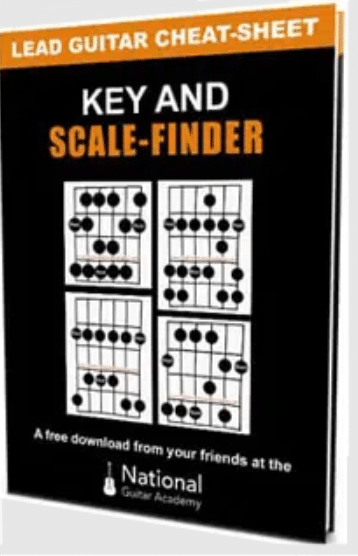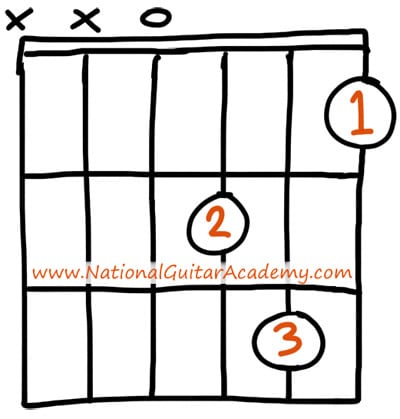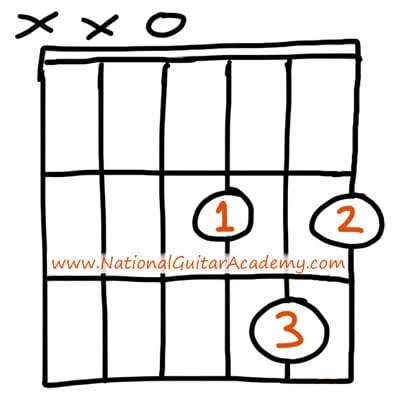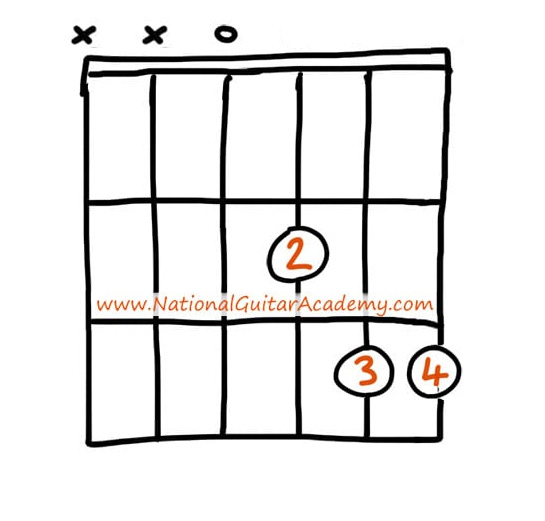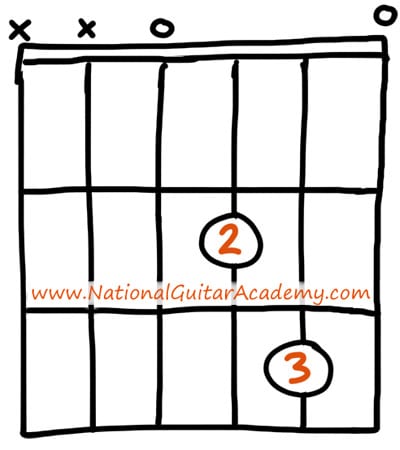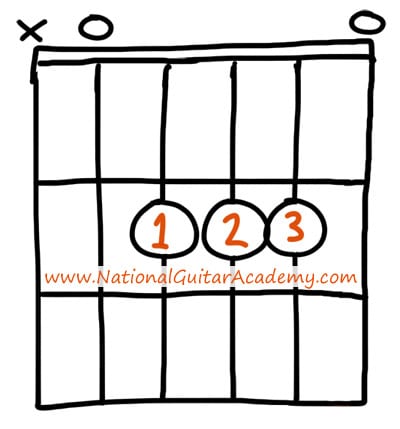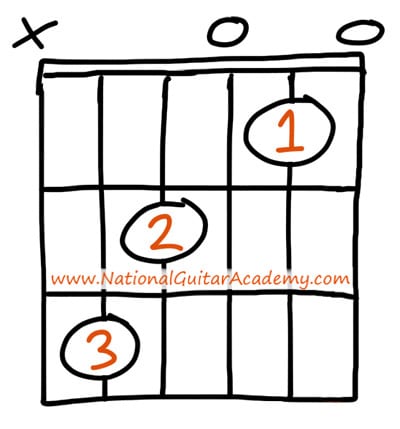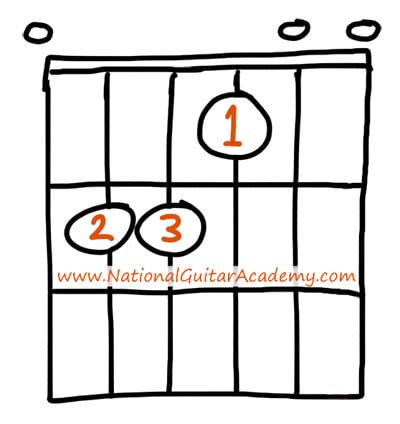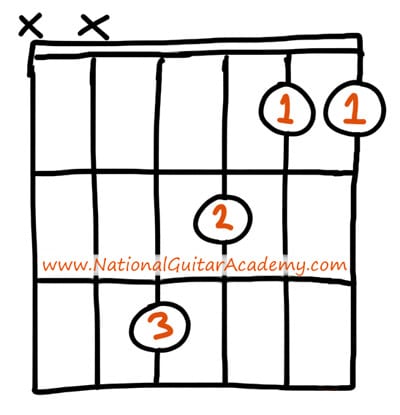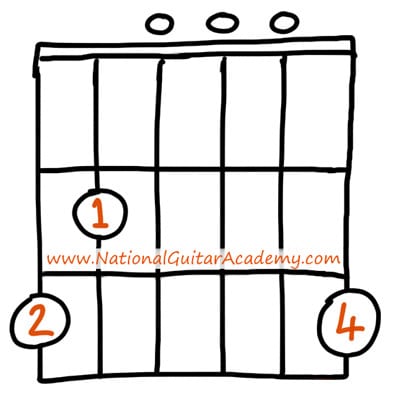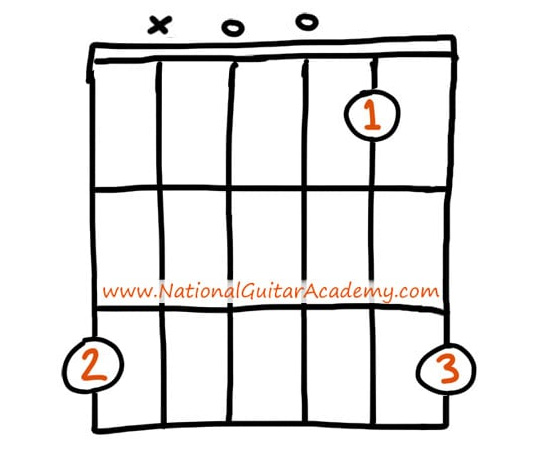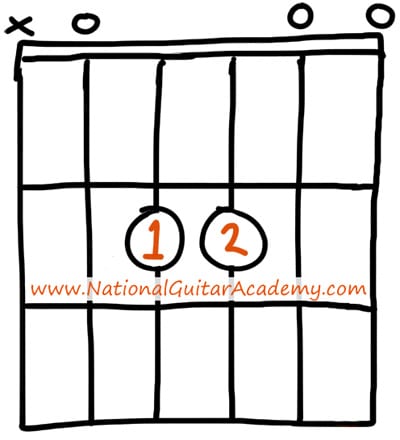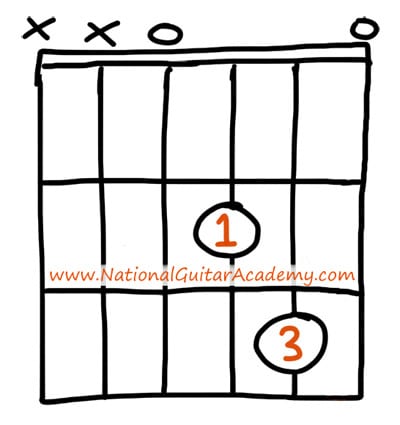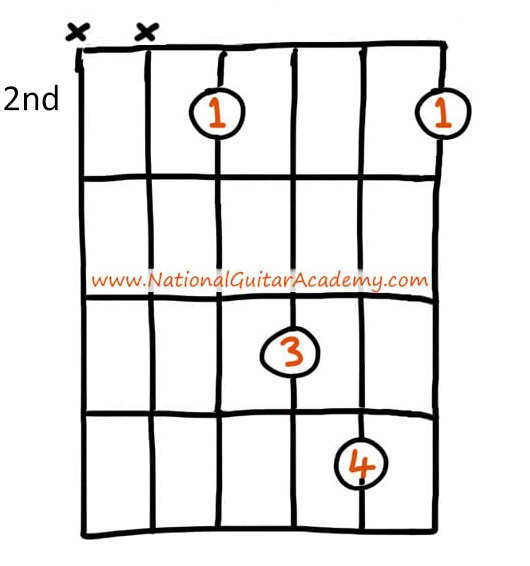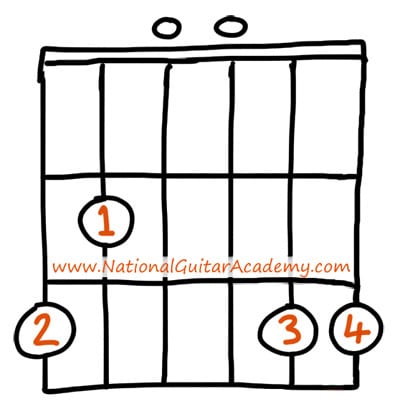Suspended chords help us create more movement around our major and minor chords – Let’s dive into the world of Sus chords!
Over 100,000 guitar-learners get our world-class guitar tips & tutorials sent straight to their inbox:
Click here to join them
Get our best guitar tips & videos
In this free lesson you will learn…
- What suspended chords are & how they work
- How to play & use suspended chords in your music
- Why creating movement is so important
- How suspended chords are constructed
- Countless musical examples of sus chords!
The What, Why, & When Of Sus Chords
Every once in a while, we run into a chord that’s labeled “sus4” or “sus2”.
Typically we look it up, find a shape, and move on.
But what are sus chords, anyway?
- Why would someone want to use a sus chord when there are plenty of other chords available?
- And when do sus chords sound good?
- How can we use sus chords to help a song to sound great?
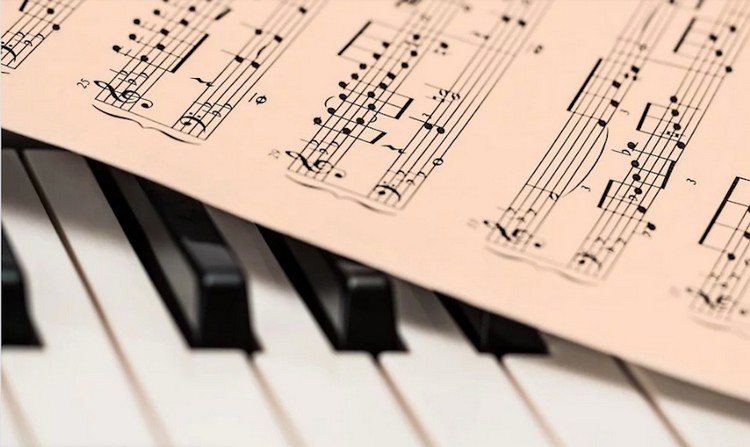
Today’s the day we get into sus chords and unlock the mysteries of their magic!
By the end of this article, you’ll have a good understanding of the following:
- What sus chords are and their similarities and differences from major and minor chords
- The difference between sus4 chords and sus2 chords
- How to modify familiar chord shapes to create sus chord shapes
- The effect of sus chords and when to use them in playing
- Common uses of sus chords in popular songs
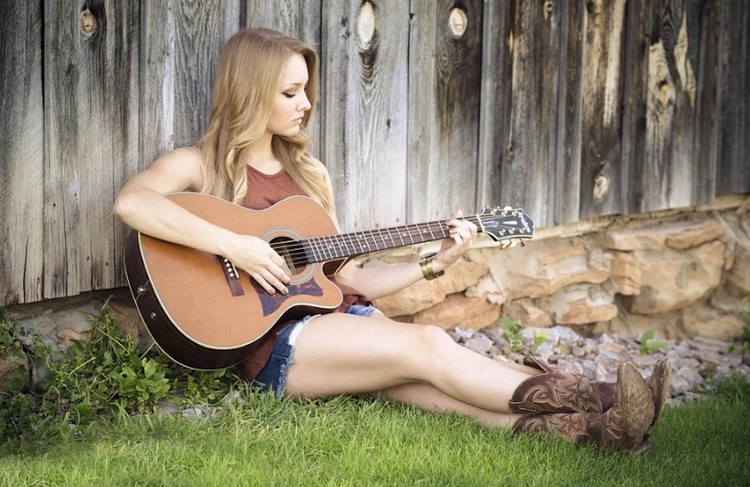
Where Do Sus Chords Come From?
“Sus chords” is the abbreviated version of suspended chords, and that name perfectly describes what’s happening in the chord itself.
“Suspended” is a quality or specific personality of a chord.
The qualities of chord that you’re already familiar with are major and minor, so to understand what sus chords are, we’re going to compare them with the ones we know.
Sus chords, like major and minor chords, are fundamentally triads – three-note chords
The notes used in a chord are based on the major scale.
Here’s a chart of the notes in all the major scales for you to check out:
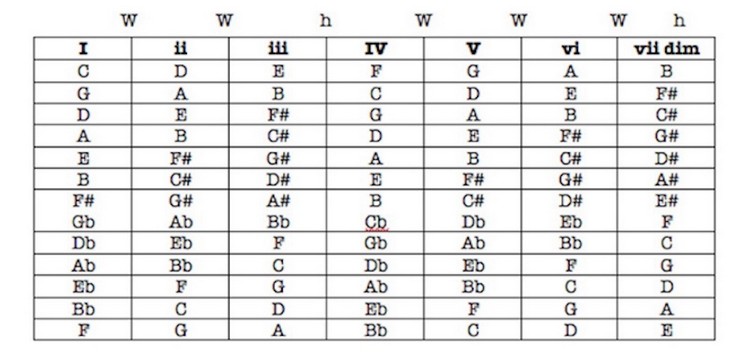
Major & Minor Chords
The three notes in major and minor chords have names that refer to their position in the major scale above:
- The root of the chord, giving the chord its letter name;
- The third of the chord, giving the chord its major or minor quality; and
- The fifth of the chord, giving the chord stability and context.
The only difference between a major and minor chord is the third. The D major chord, for example, is made up of the first, third, and fifth notes of the D major scale:
D, F#, & A.
The D minor chord has the same root, D, and the same fifth, A.
The third in a minor chord is a half-step lower than the third in the major chord.
A half-step down from F# is F, so the D minor chord is D, F, A.
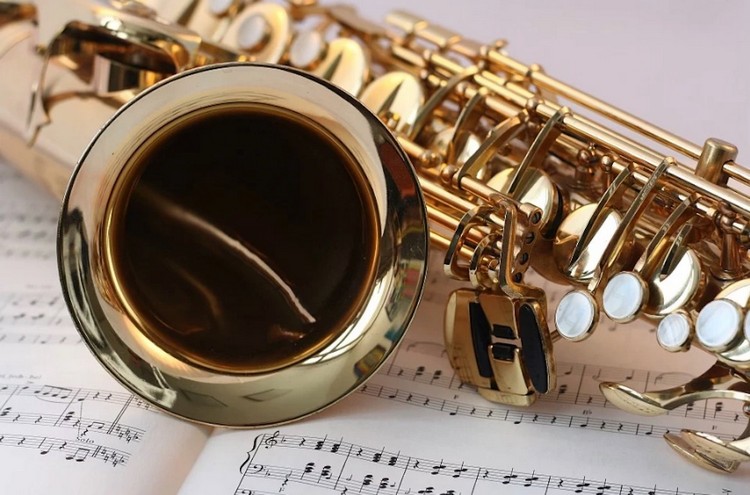
This is true for all guitar chords: the third in a major chord is four half-steps (or frets) up from the root.
- That interval is called a major third to differentiate it from a minor third.
- The minor third is three half-steps or frets up from the root.
- In the D example, both notes use the letter F, but an F natural, as in the D minor chord, is on the first fret of the E string.
Dm (xx0231)
(If you don't understand the above image please read our article "How To Read Guitar Chordboxes In 60 Seconds". It will make everything clear!)
The F# however, as in the D major chord, is on the second fret of the E string.
D (xx0232)
The distance, counted in half-steps, in a major third is one half-step larger than it is in a minor third, which is where the names “major” and “minor” come from.
Due to us using different fingers on different strings to make the D and Dm chords, it’s not easy for us to feel that there’s only one fret on one string that is actually different.

Learn 12 EASY beginner chords with our popular guide
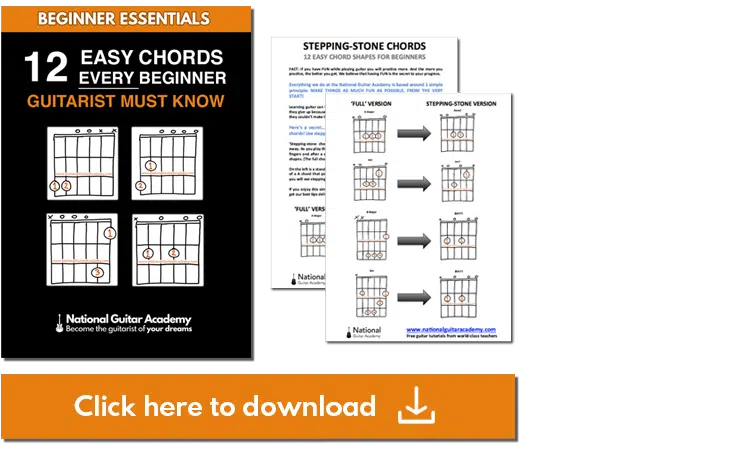
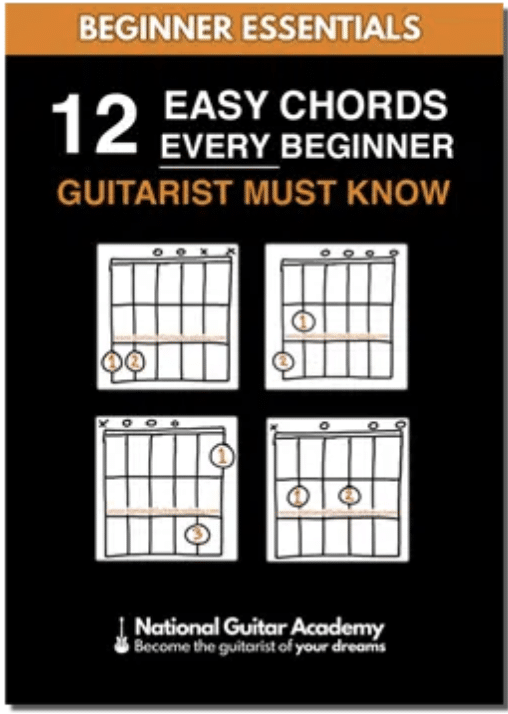
Where should we send it?
✅ Stop struggling. Start making music.
✅ Learn beginner-friendly versions of every chord.
This is our most popular guide and it will improve your chord ability quickly! 😎
Get your own personalised guitar-learning plan 🎸
Get a custom guitar-learning plan here: Click here for GuitarMetrics™
World-Class Guitar Courses 🌎
Learn from the world's best guitar educators: Click here for our guitar courses
What Are We Suspending?
A suspended chord takes away the third, whether a major or minor and replaces it with a fourth, most commonly, or sometimes a second.
That’s how sus4 chords and sus2 chords exist!
- Instead of root, third, fifth, a sus4 chord has a root, fourth, and fifth.
- A sus2 chord has a root, second, and fifth.
- Due to the suspended chord taking away the third, the note that tells your ear whether the chord is major or minor, what you are left with is a little bit of ambiguity or tension.
- Suspended chords are neither major nor minor, which makes them pretty aptly named.
It also makes them pretty versatile, because they can move to either a major or a minor chord, or they can just stick around and prolong that sense of harmonic ambiguity.
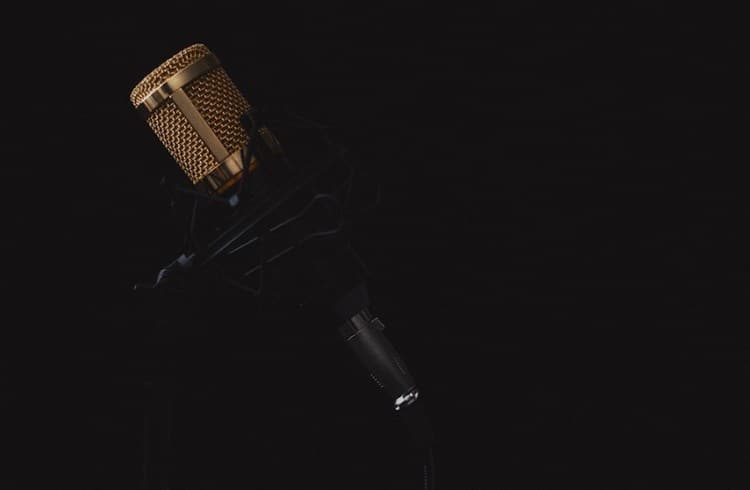
So, in the D chord example, the minor third (F) is on the E string first fret.
The major third (F#) is on the E string second fret.
The fourth note in the D major scale as shown above is a G. The fourth (G) is on the E string third fret.
To make a Dsus4 chord, you can make a D major chord and add your fourth finger to the E string, third fret.
Whether you leave your second finger on the E string after you add your pinky is up to you.
It may be easier to leave it there, because all we’re really doing is adding something on to an already familiar chord shape.
Dsus4 (xx0233)
With the Dsus2 chord, we’re taking away the third and replacing it with the second, which is an E.
Hey, there’s an E string though!
With that, all you need to do to make a Dsus2 chord is make a D major chord and take your second finger off of the E string.
Dsus2 (xx0230)
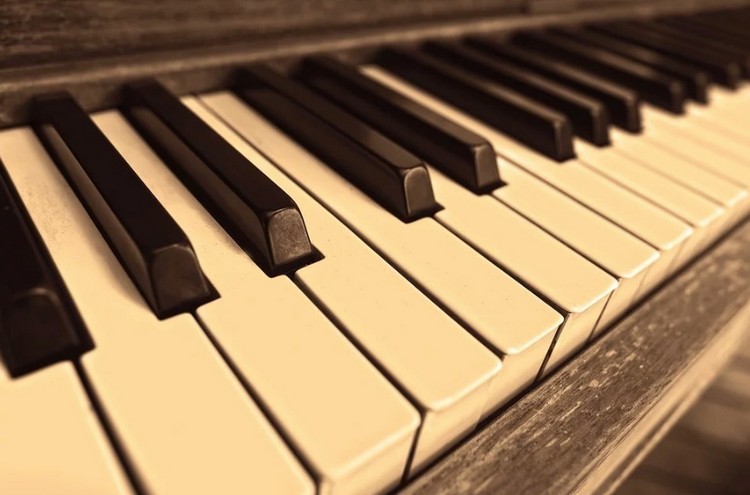
How To Make Sus4 Chords
Due to sus4 chords being modifications of only one part of a major or minor chord, they’re generally pretty simple to make as open shapes, with a couple of notable exceptions.
Here’s a breakdown of those modifications:
Open Sus4 Chords
The chords we generally play as open shapes on the guitar – that means using open strings as part of the chord – are A, C, D, E, and G. We can include the four-string F in here as well because it works roughly the same way.
The A or Am chord becomes an Asus4 when we add a finger to the B string third fret.
A (x02220)
Asus4 (x02230)
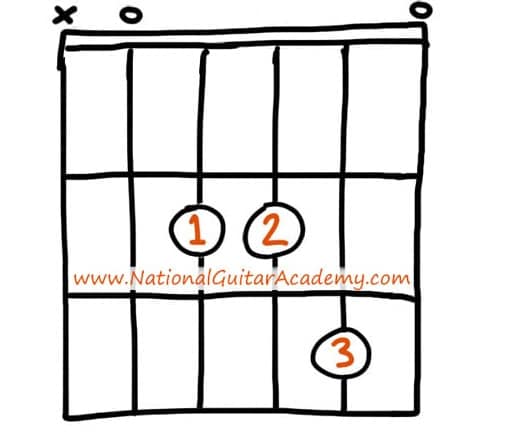
The C chord becomes a Csus4 when we add a finger to the D string third fret.
Note that you’ll want to mute the open E string; just get some part of your hand or finger to lightly touch it and it won’t ring even if you strum over it.
C (x32010)
Csus4 (x3301x)
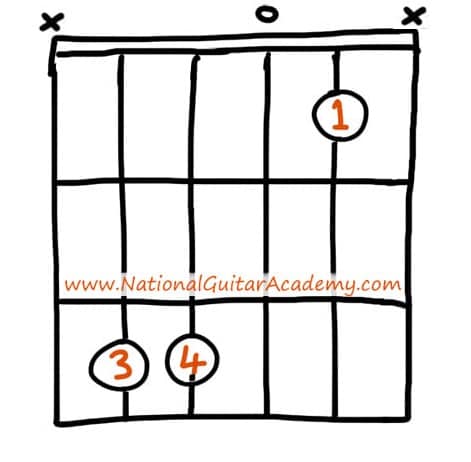
As we discussed, the D or Dm chord will become a Dsus4 when we add a finger to the E string at the third fret.
D (xx0232)
Dsus4 (xx0233)
The E or Em chord becomes an Esus4 when we add a finger to the G string second fret.
E (022100)
Esus4 (022200)
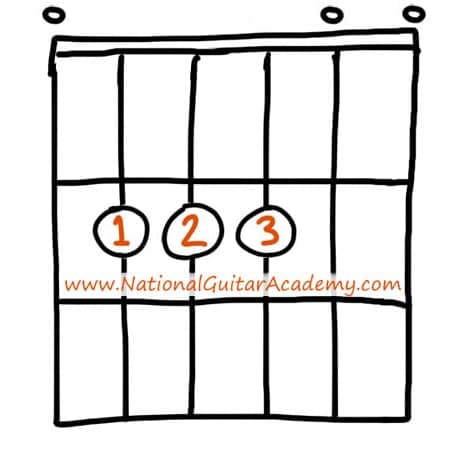
The F chord becomes an Fsus4 when we add a finger to the G string third fret.
F (xx3211)
Fsus4 (xx3311)
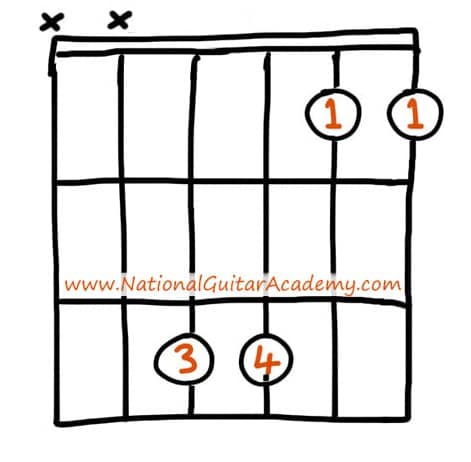
The G chord becomes a Gsus4 when we add a finger to the B string first fret.
Note that you’ll want to mute the A string.
G (320003)
Gsus4 (3×0013)

Barre & Moveable Sus4 Chord Shapes
If you’re interested in exploring sus4 chord shapes around the neck, here are a few moveable shapes you can use.
The A-shape barre chord can be modified just like the A chord to make a sus4 barre chord wherever you find the root on the A string.
Bsus4 (x24452)
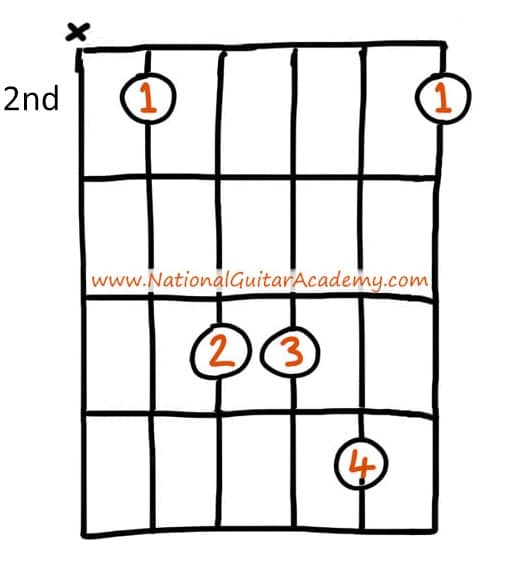
Just like the E chord, the E-shape barre chord can also be modified to make a sus4 barre chord wherever you find the root on the E string.
F#sus4 (244422)
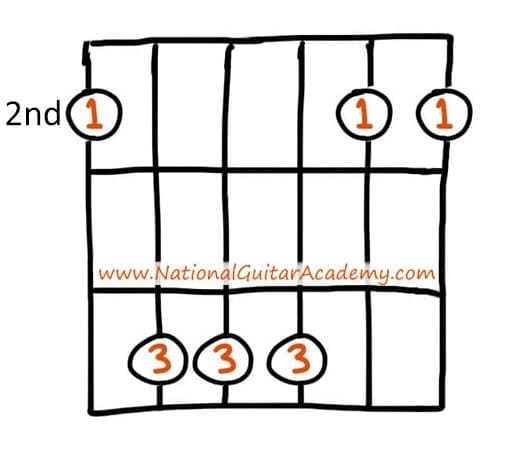
F#sus4 (2×4422)
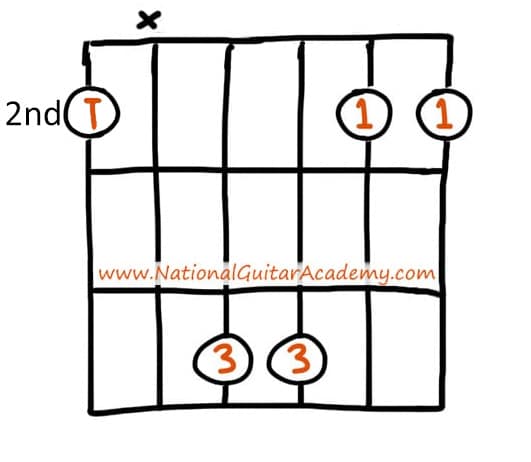
Some people prefer the second method above, using the thumb on the low E string and muting the A string.
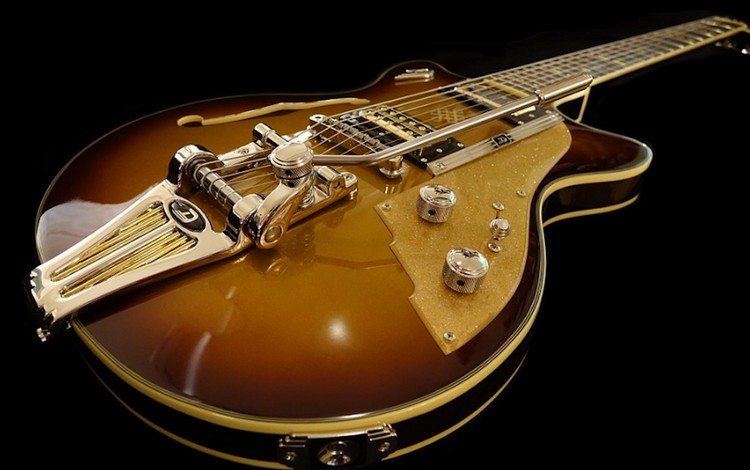
How To Make Sus2 Chords
Sus2 chords follow the same general principle, replacing only the third of a major or minor chord with the second note from the major scale.
Open Sus2 Chords
The open chords that are available for easily altering to a sus2 chord are A, C, D, F, and G.
To make an Asus2, just drop your finger off of the B string to leave it open.
A (x02220)
Asus2 (x02200)
For Csus2, just drop your finger off of the D string to leave it open. You can mute the high E.
C (x32010)
Csus2 (x30010)
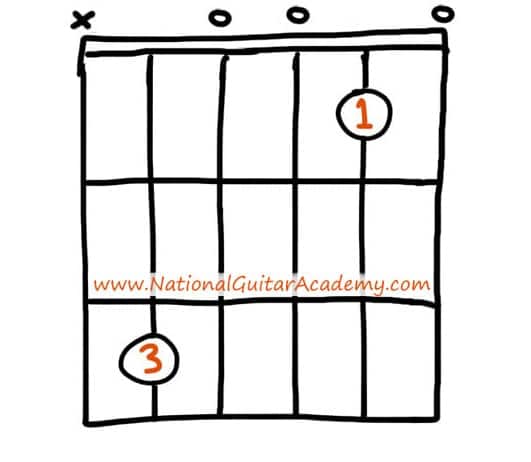
To make a Dsus2, drop your finger off of the E string to leave it open.
D (xx0232)
Dsus2 (xx0230)
For an Fsus2, drop your finger off of the G string to leave it open.
F (xx3211)
Fsus2 (xx3011)
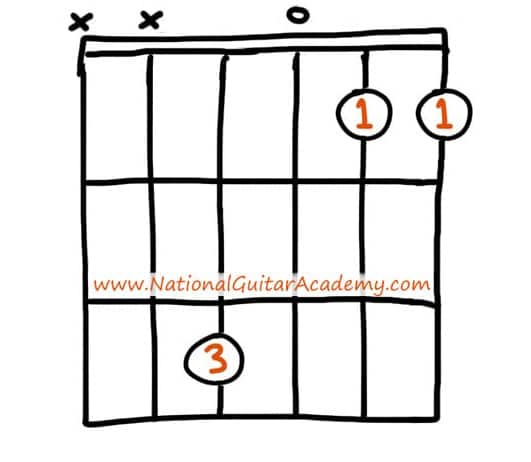
To make a Gsus2, you could drop your finger off of the A string to leave it open, but if you try that, you’ll notice that the bass notes of your chord are ringing too close together and muddying up the sound.
Try this method instead: mute that A string, add a finger to the G string second fret, and add a finger to the B string third fret.
G (320003)
Gsus2 (3×0233)
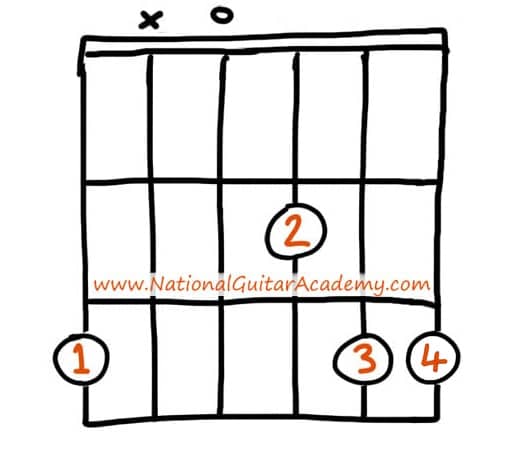

Barre & Moveable Sus2 Chord Shapes
Did you notice that the E chord does not have a handy sus2 shape? There is one, but it is a completely different chord shape than the E.
Esus2 (024400)
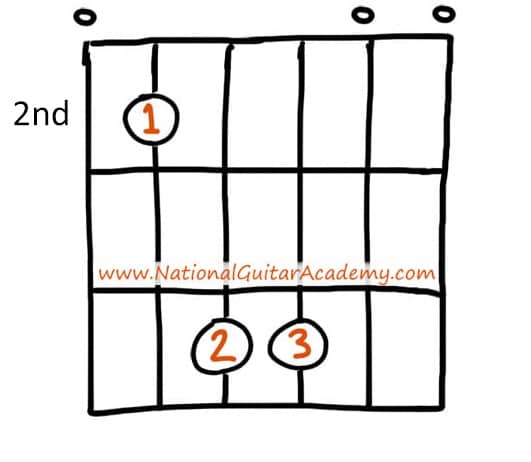
That doesn’t translate very well to a barre chord shape, but the A chord shape does! Here’s how to make a sus2 chord wherever you find the root on the A string.
Bsus2 (x24422)
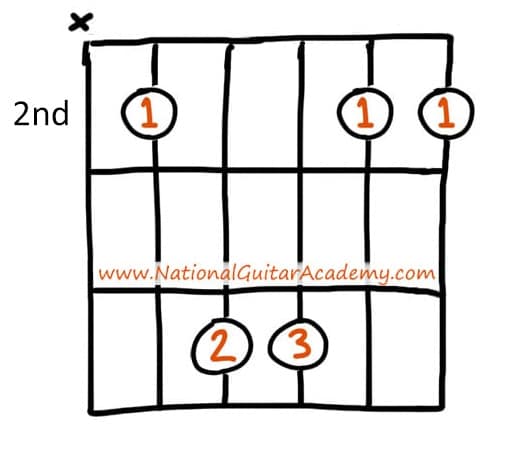
You can also find the root of the sus2 chord you want on the D string and use this shape!
Esus2 (xx2452)
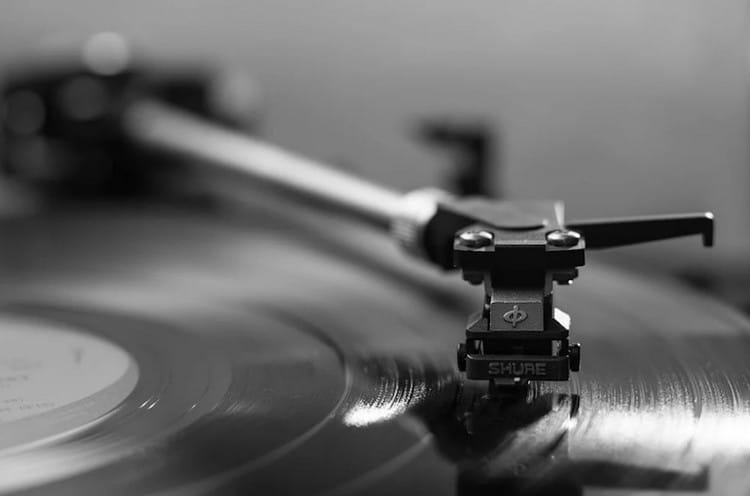
Download our lead guitar cheat-sheet to make things easier
It's hard to understand which scales work with which keys.
So we created a cheat-sheet! A key and scale-finder that you can use again and again.
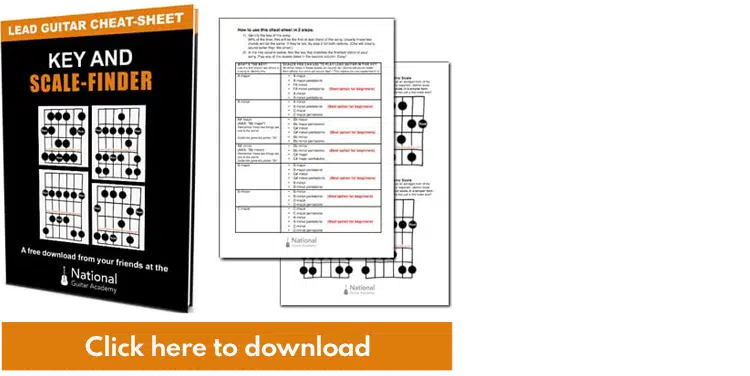
Get your personalised guitar-learning plan 🎸
Get a custom guitar-learning plan here: Click here for GuitarMetrics™
World-Class Guitar Courses 🌎
Learn from the world's best guitar educators: Click here for our guitar courses
What Are Sus Chords Supposed To Do?
As we now know, sus chords take away the third and replace it with the fourth or second note of the major scale.
These types of chords add new colour to our major and minor chords, and they also provide us with stepping stones between chords. Suspended chords serve to help us move from one chord to the next
Try This: Play a C major chord, then drop your middle finger on the D string to create a Csus2 chord.
From there, shift to a G major chord. Csus2 and G major share the note D, which means that the Csus2 chord will help you transition from C major to G major with ease! Give it a shot!
C Major
Csus2

G Major
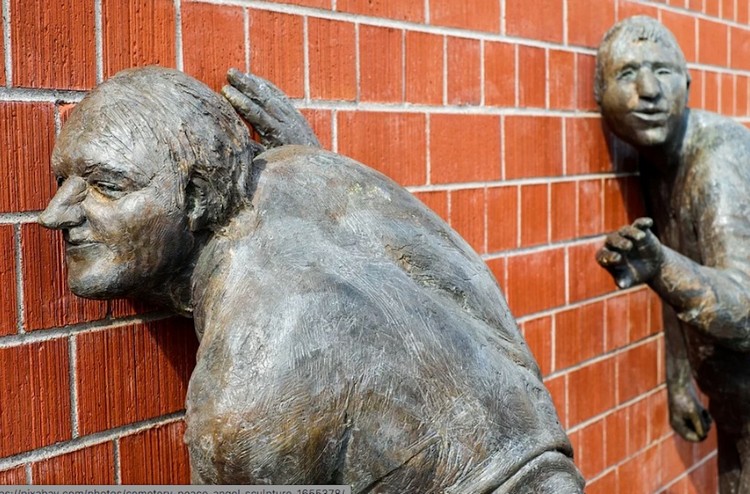
What’s The Relation Between Sus Chords & Add9 Chords?
We’re so glad you asked!
Just kidding. We know you didn’t ask.
We’re just going to open this can of worms for when you start running into add9 chords and see that they have practically the same notes.
In chord theory, which is what we’ve been discussing this whole time, every little symbol and initial you see in a chord name is a direction to add or replace a note.
As you may have noticed, it’s a bit like a code for musicians.
- Chord theory wraps the scale around and continues the numbers in an attempt to eliminate confusion.
- In short, the ninth is the same note as the second.
An add9 chord is a chord that has all three notes of the major or minor chord and adds the second/ninth note in the scale, like this.
Fsus2 (xx3011)
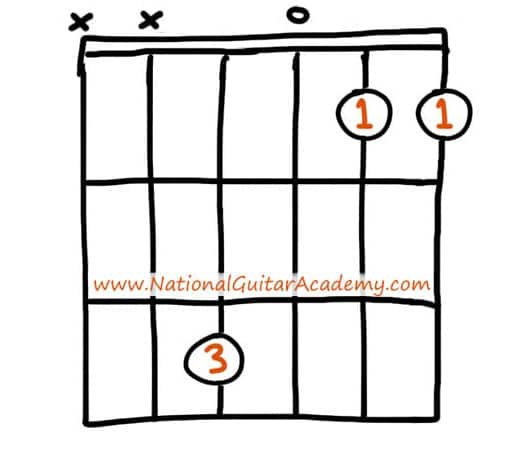
Fadd9 (xx3213)

Pro Tip: Look for similarities in chord structure wherever possible! Many chords share notes and characteristics that make them easier to memorize! How many similarities can you find?
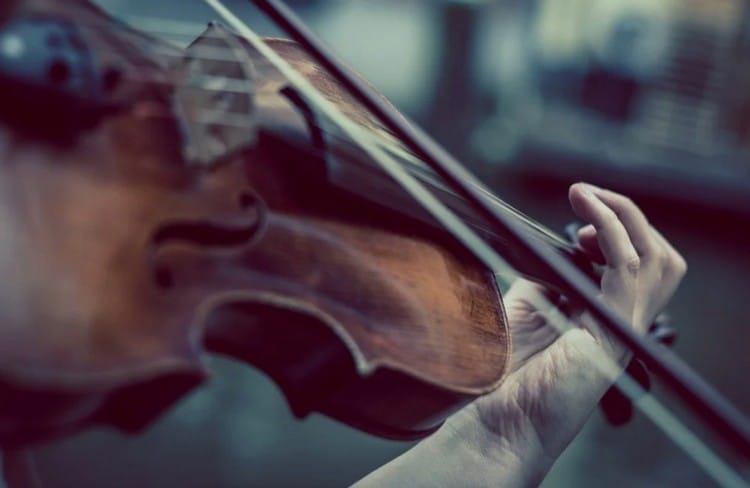
Common Uses For Sus Chords
Sus chords are commonly used to either delay or replace resolution, the feeling that the song or a section of a song has concluded.
- Neil Young’s “Journey Through the Past” uses a Dsus4 chord as the third chord, which then resolves to the D chord after two beats.
- The king of the sus4 chord, Pete Townshend, uses it preceding the first four chords in the verse of “Pinball Wizard.”
- He is using that Fsus4 shape the whole time and just moving it down the neck!
- Enjoy this example from the Golden Age of music videos, where Tom Petty kicks off “You Got Lucky” with a sus4 chord that resolves to a minor chord.
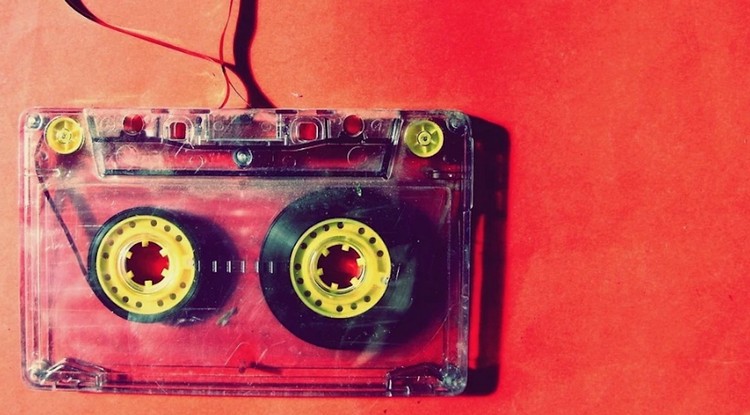
Another common use of sus chords is to kill time on a chord, creating motion in the chord so you don’t get sick of it before it’s time to move on to the next chord.
- Peter Buck does it in REM’s “Don’t Go Back to Rockville,” at the end of the first two lines of the verse, filling that little space when there’s nothing else going on.
- Bruce Springsteen pivots between the sus4 and sus2 chords in the beginning of “Rosalita.” It really gets the crowd going!
- Famously, Brian May juggles a D and Dsus4 chord in the beginning of Queen’s “Crazy Little Thing Called Love.”
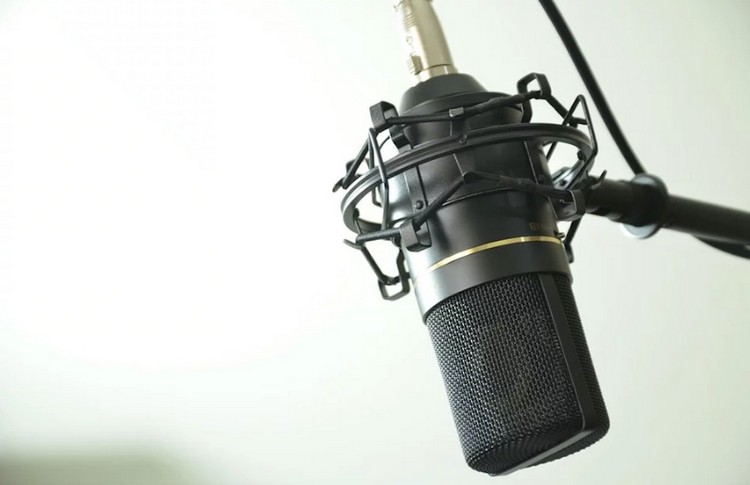
Another very common use of sus chords, particularly on guitar, is to decorate chords, using the sus4 and sus2 to jazz up a chord or help drive it somewhere else.
- Exhibit A: “Can’t You See,” by the Marshall Tucker Band. The acoustic is constantly playing around with sus4 and sus2 throughout the introduction.
- Jimmy Page used just about the same trick in “Thank You.” The sus4/sus2 turnaround you hear is used as an ostinato, a repeating figure laced over the top of a changing chord.
If you really want to know who the undisputed champion is of using sus chords in this way, here he is: James Taylor, playing “Carolina On My Mind.” It’s like he can’t stop doing it!

Use These Chords Wherever You Like!
Now that you’ve got enough sus chords for any occasion, feel free to use them in your arrangements of the songs that you’re learning.
If you’d like to learn more about chord theory, here’s Guitar Chords In Context, an excellent guitar-specific primer on what all those chords are doing together!
Recommended Resources
If you enjoyed this chord primer from the National Guitar Academy, you’ll love our other free content below!
What Type of Guitarist Are You?
Take our 60-second quiz & get your results: Take The Quiz
Join the world's best online guitar school 🌎
- Get your own personalised guitar learning plan (customised just for YOU).
- World-class online guitar courses. Learn at your own pace.
- Community Campus & Learning Forum - A friendly community! Connect with our team & students. 😊
- Beginner Song library with chordsheets, tabs and tips. (Songs suitable for all levels!)
- Regular live streams, seminars and Q&A sessions - Learn from world-class guitar educators. Get all your questions answered!
Click here to learn more about National Guitar Academy membership 
Cool Guitar T-shirts 😎
Look cooler! Check out our merch: Click here to see our merch store
Want free guitar tips and video lessons delivered to your inbox?
Join over 100,000 guitar-learners and subscribe to our guitar-tips-by-email service. (It's free.)
We'll send you a series of lessons that will move you to the next level of your guitar journey.
Learn how everything fits together quickly, easily and effectively. We share ninja tips (for instant fun!) but also timeless fundamentals that will deepen your understanding.


Get our best guitar tips & videos
Popular Lessons
How To Learn Guitar: An 11-Step Programme For Beginners
How To Choose The Perfect Beginner Guitar
More Cool Guitar Stuff
Learn about National Guitar Academy: About Us
Join us on Facebook for daily guitar tips.
Listen to our Learn Guitar Podcast for rapid guitar progress.
Check out our free chord lessons.

